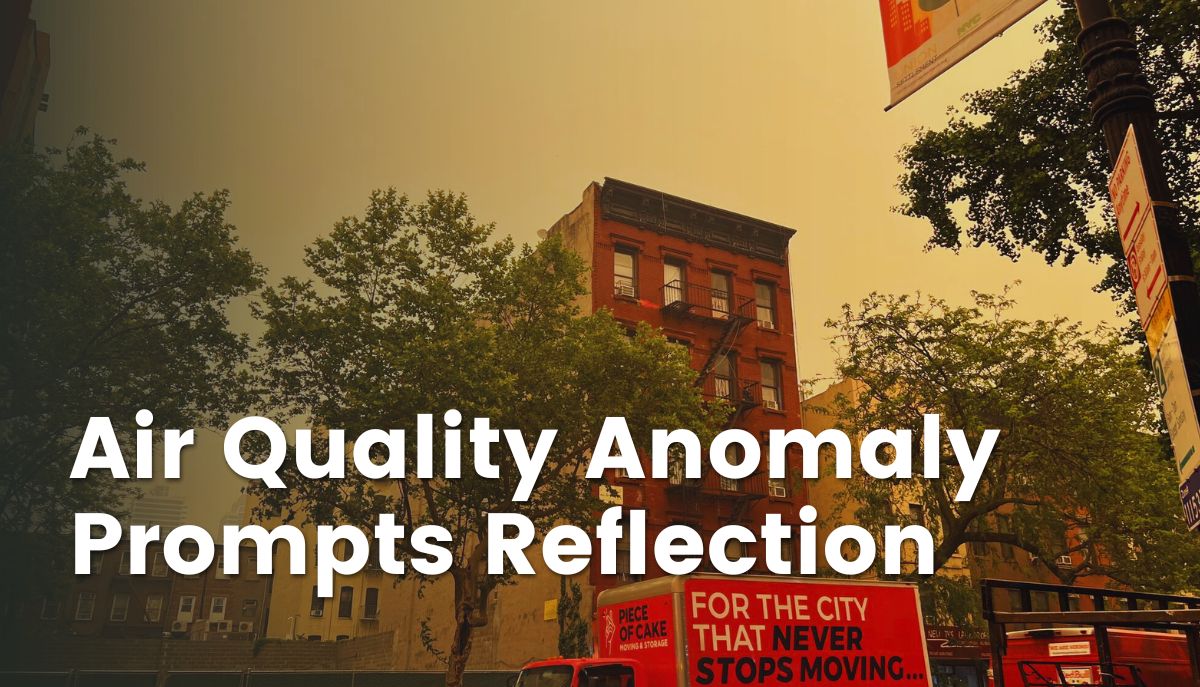Last week, a huge plume of smoke originating in Canada moved south. Though Canada typically experiences a wildfire season, this year’s season was different. Less rainfall and higher temperatures exacerbated what was a typical occurrence. Not least, an area of high pressure flanked by two areas of low pressure over continental North America created a stalled weather pattern, what meteorologists call an omega block. Consequently, the smoke hovered over the eastern United States for longer, exposing millions of people to unhealthy air for days.
The weather anomaly has prompted discussions about climate change and workers’ health. At La Isla Network we have historically worked on the connection between workers’ health and excessive heat without water, rest, shade and sanitation. We also recognize the connection between climate change and heat. Nevertheless, we also recognize that climate change affects multiple aspects of our environment, including air quality.
For the second straight day, New York City was ranked the worst city in the world for air quality on Wednesday, as hazardous smoke and particles continue to flow south from wildfires in eastern Canada pic.twitter.com/XajLaPlTbS
— NowThis (@nowthisnews) June 9, 2023
At the moment, neither the Environmental Protection Agency nor OSHA have mandates on when outdoor work should cease due to hazardous air quality. Nevertheless, we are glad to see that contractors took matters into their own hands and encouraged their workers to take breaks when necessary, and if need be go home. Also, the New York State Department of Labor’s Division of Worker Protection released an announcement encouraging employers located in regions with Air Quality Health Advisories in effect to limit outdoor work and activities that require exertion.
Workers and employers should take the following measures to mitigate the risk of occupational illness and injury:
- Determine if there is harmful exposure
- An Air Quality Index (AQI) for PM2.5 particulate of 151 or greater is considered unhealthy.
- The AQI can be determined by checking the US EPA AirNow
- Or through a measurement device
- An Air Quality Index (AQI) for PM2.5 particulate of 151 or greater is considered unhealthy.
- If the risk of harmful exposure exists (i.e. the AQI is 151 or greater), then
- Implement a system for communicating wildfire smoke hazards in a language and manner readily understandable by all employees, including provisions designed to encourage employees to inform the employer of hazards without fear of reprisal.
- Implement engineering controls, when feasible, to reduce employee exposure to PM2.5 to less than a current AQI of 151 (or to the extent feasible if less than a current AQI of 151 cannot be achieved). Examples include providing enclosed structures or vehicles for employees to work in where the air is filtered.
- Whenever engineering controls are not feasible or do not reduce employee exposures to PM2.5 to less than a current AQI of 151, implement changes to work procedures or schedules when practicable. Examples include changing the location where employees work or their work schedules.
- Provide proper respiratory protection equipment, such as disposable filtering facepiece respirators (dust masks), other half facepiece respirators, or full facepiece respirators.
- N-95-grade masks or higher are adequate. To filter out fine particles, respirators must be labeled N-95, N-99, N-100, R-95, P-95, P-99, or P-100, and must be labeled as approved by the US National Institute for Occupational Safety and Health (NIOSH). Full facepiece respirators provide at least five times as much protection from fine particles as half facepiece respirators such as filtering facepiece respirators (dust masks).
- The employer must provide a sufficient number of respirators for employee use on a voluntary basis when the current AQI for PM2.5 is equal to or greater than 151 but does not exceed 500. The employer must require employees to use respirators when the current AQI for PM2.5 is greater than 500.
- If the AQI is less than 151, then
- The employer may provide filtering facepiece respirators (dust masks) to employees or allow employees to bring their own.

The above guidelines were adapted from the State of California Department of Industrial Relations’ webpage on protecting outdoor workers exposed to smoke from wildfires. For more information about clean air at work, visit the American Lung Association.
As we continue to live with the consequences of climate change, we will need to think about how to protect the workers who construct our buildings and harvest our food. The most recent episode in the eastern United States is a reminder that climate change will affect workers on multiple fronts.
If you have any further questions or comments, please reach out to us using the contact form.





